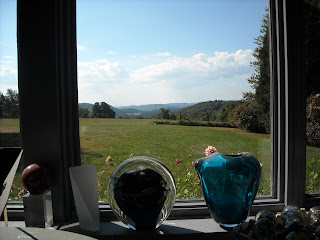


Last week my visual studies class went to Williams College Museum of Art again. This tim
 e we got the unique opportunity to look at some of their rare photographs. John Stomberg gave us a great lecture about the history of photography and digital versus analog film. He also took us throught some of the current exhibitions and showed us photographs of note. We saw so many photographs and talked about so much it's hard to discuss it all. Instead I'm going to focus on a few specific pieces that deal with manipulation in photography.
e we got the unique opportunity to look at some of their rare photographs. John Stomberg gave us a great lecture about the history of photography and digital versus analog film. He also took us throught some of the current exhibitions and showed us photographs of note. We saw so many photographs and talked about so much it's hard to discuss it all. Instead I'm going to focus on a few specific pieces that deal with manipulation in photography.The first piece we talked about was Oppenheimer's Garden by Robert Parke-Harrison. He used analog film, but put the final photograph together by cutting and pasting paper negatives together. It was printed over a wash, then covered with a layer of bees wax. This process gives the image a dream-like quality. It was created using all old techniques in protest agains the new photography medium, digital.
The second piece we talked about was part of a series called Fictitious Portraits by Keith Cottingham. It was the first time an artist had used photoshop with a Mac to create an image. The artist made sculptures of faces, took photographs, and then used them as a base to create the faces of the boys. These images, thought not taken with a camera, are considered photographs because they're printed on digital photo paper.
This image caused a great uproar in the photography community. It was argued that people couldn't trust photographs to show what was real; you could erase what was human and create it on a computer. The photo, according to critics, was commenting on cloning and creating a "master" or "perfect" race. The photographs came out around the same time the first sheep was cloned and digital was still relatively new. There were numerous conventions where some artists walked out. It was clear that photography had to be redefined. One of the arguments for digital was that it was simply a new way to take a look at photographs. Even with traditional media artists had been manipulating images of "reality", as is shown by Oppenheimer's Garden. Now digital is not so contravertial. In fact, it's what most photographers use. Some use it without manipulation, as simply a different form than analog, others manipulate heavily. The photography controversy reminded me of the great uproar that was raised with the impressionists. Painting up until that point had become focused on making images look as realistic as possible. Impressionists ignored that rule and tried to capute the light instead of making the images look perfectly real.
Up until this trip I had reservations about digital photography myself. This was partly due to starting my photo education with analog film, and partly because I felt manipulating the image on the computer was "cheating". But this trip opened my eyes to why digital is now considered a legitimate form of photography. It's still art. Photography isn't necessarily just about capturing reality; it can be about creating something new from reality.













